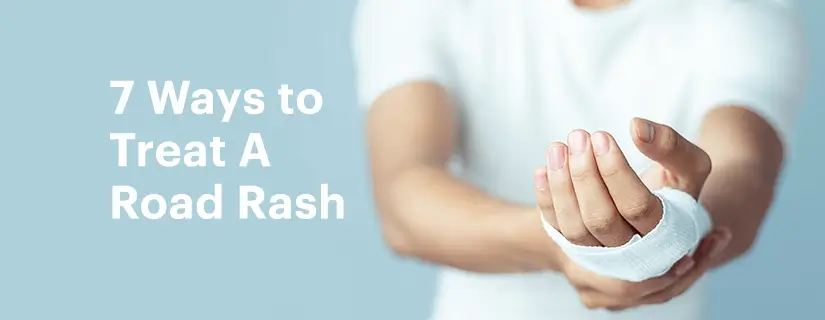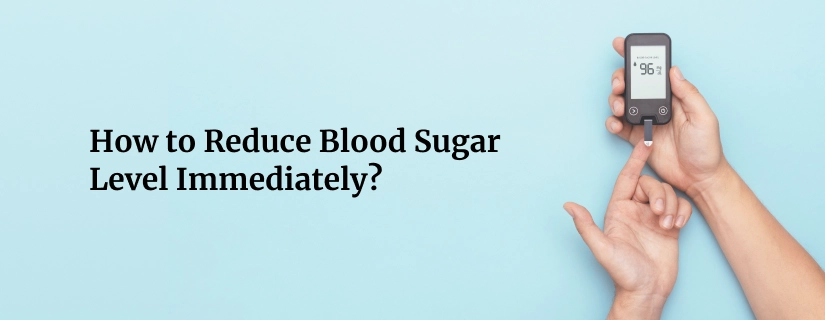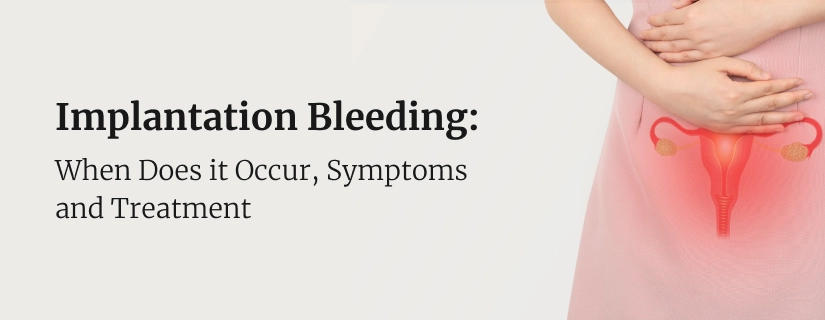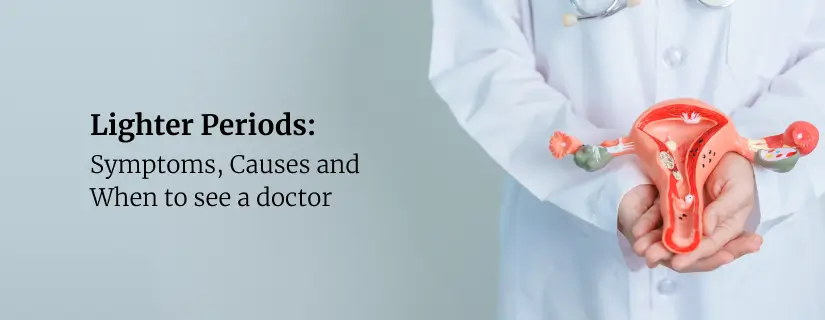-
Doctors
-
Specialities & Treatments
Centre of Excellence
Specialties
Treatments and Procedures
Hospitals & Directions HyderabadCARE Hospitals, Banjara Hills CARE Outpatient Centre, Banjara Hills CARE Hospitals, HITEC City CARE Hospitals, Nampally Gurunanak CARE Hospitals, Musheerabad CARE Hospitals Outpatient Centre, HITEC City CARE Hospitals, Malakpet
HyderabadCARE Hospitals, Banjara Hills CARE Outpatient Centre, Banjara Hills CARE Hospitals, HITEC City CARE Hospitals, Nampally Gurunanak CARE Hospitals, Musheerabad CARE Hospitals Outpatient Centre, HITEC City CARE Hospitals, Malakpet Raipur
Raipur
 Bhubaneswar
Bhubaneswar Visakhapatnam
Visakhapatnam
 Nagpur
Nagpur
 Indore
Indore
 Chh. Sambhajinagar
Chh. SambhajinagarClinics & Medical Centers
Book an AppointmentContact Us
Online Lab Reports
Book an Appointment
Consult Super-Specialist Doctors at CARE Hospitals
How to Treat Road Rash: 7 Simple Ways to Treat
Updated on 16 March 2020

Caused by an unfortunate event, road rash is a type of skin abrasion or friction in which a layer of skin is scraped away from the body. It is extremely painful and can lead to severe scarring, deformity or life-threatening infections. Proper cleaning, care, and treatment are crucial to road rash recovery and go a long way in preventing scarring and deep tissue damage. Therefore, it is important to know the proper techniques for cleaning and treating a patch of road rash. However, after cleaning and patching yourself up, you must head to the emergency hospital in India for further assistance.
What Causes Road Rash?
Road rash is an injury which involves the ripping away of outer tissue by a rub or a scrape against another object. Although it’s a minor injury, it can, at times affect several layers of the skin, requiring skin grafting surgery to promote healing. Common activities that can lead to road rashes include:
- Biking
- motorcycle riding
- baseball or softball
- running
- skateboarding
Symptoms of Road Rash
Road rash refers to skin abrasions or injuries that occur as a result of sliding or scraping against a rough surface, typically during accidents or falls while riding bicycles, or motorcycles, or engaging in sports activities. The severity of road rash can vary from mild abrasions to deep wounds. Here are the common symptoms associated with road rash:
- Abrasions: Road rash is characterized by visible abrasions or scrapes on the skin. The affected area may appear red, raw, and may exhibit damage to the outer layer of skin, exposing the underlying tissue.
- Pain and Tenderness: Road rash injuries can be painful, particularly in areas where the abrasions are deep or extensive. The affected area may be tender to the touch and may cause discomfort during movement.
- Bleeding: Depending on the severity of the road rash, there may be bleeding from the injured area. Superficial abrasions may cause minimal bleeding, while deeper wounds may result in more significant blood loss.
- Swelling: Inflammation and swelling can accompany road rash injuries. The body's natural response to tissue damage leads to increased blood flow to the affected area, resulting in swelling and localized edema.
- Stinging or Burning Sensation: Road rash injuries often cause a stinging or burning sensation due to exposed nerve endings and the irritation of damaged skin.
- Scab Formation: As the body initiates the healing process, scabs may form over the injured area. Scabs serve as protective barriers, preventing further infection and aiding in the regeneration of new skin cells.
- Risk of Infection: Road rash injuries leave the skin vulnerable to infection. Bacteria from the environment or dirt and debris that enter the wound can cause infection if proper wound care and hygiene are not maintained.
- Scarring: Depending on the depth and extent of the road rash injury, scarring may occur during the healing process. Deeper wounds or those that are not properly cared for are more likely to result in noticeable scars.
7 Ways to Treat Road Rash
Here are 7 Ways to Treat A Road Rash:
In most cases, road rash injury can easily be treated at home without going to the doctor or hospital. However, any signs of additional body damage must always be monitored, and if found, one must head to an emergency medical treatment hospital in India. Similar to road rash treatment for road accidents, there are a few steps that must be taken to treat road rashes as well.
- Wash your hands: There are a number of bacteria and other micro-organisms floating on the surface of your hands that can cause infection. Whether you are caring for any other person or your own, you must always wash your hands first.
- Wash the injury: Once your hands are all clean, you must wash the road rash abrasion. This must be done by applying gentle pressure as scrubbing the injury vigorously can cause further damage and bleeding.
- Remove debris: Any bits of rock, dirt or grass, etc. must be carefully removed. Use tweezers if required. There shouldn’t be any visible impurities or substances sticking to the rash.
- Apply antibiotic ointment: Once the injury has been cleaned properly, an antibiotic appointment such as Neosporin or Bacitracin must be applied. This helps in killing any bacteria that may come in contact with your wound.
- Cover the rash: Covering the injury is an important step for wound healing that also prevents bacteria from infecting the affected area. Your skin is most likely to heal when you keep the area moist. Gauze or other lightweight dressing can be used for the purpose.
- Keep the bandage fresh: You must change your covering at least once or twice a day. If your bandage gets wet or dirty, it must be changed more frequently. Moistening the bandage before removing can help prevent it from getting stuck.
- Check for infection: You must watch out for infection as the injury heals. Any pain, pus, drainage or redness must be treated using the antibiotic ointment.
Ways to Prevent Road Rash
Preventing road rash requires taking proactive measures to reduce the risk of accidents and minimize the severity of injuries. Here are key ways to prevent road rash:
- Wear Protective Gear: Utilize appropriate protective gear when engaging in activities that pose a risk of road rash. This includes wearing helmets, knee pads, elbow pads, and sturdy footwear to provide essential protection for vulnerable areas.
- Follow Traffic Laws: Adhere to traffic rules and regulations, including speed limits, signaling, and yielding to ensure safe and responsible behavior on the road. This reduces the likelihood of accidents and subsequent road rash injuries.
- Maintain Vehicle Safety: Regularly inspect and maintain your vehicles, such as motorcycles or bicycles, to ensure they are in optimal condition. Check tire pressure, brakes, lights, and other components to minimize the risk of accidents caused by mechanical failures.
- Stay Alert and Focused: Avoid distractions while driving or participating in activities that involve potential road rash risks. Stay focused on the road, surroundings, and other vehicles or participants to react quickly and effectively to potential hazards.
- Stay Visible: Ensure visibility by wearing bright or reflective clothing, especially during low-light conditions or at night. This increases the likelihood of being seen by other drivers and reduces the risk of accidents
By implementing these measures, individuals can significantly reduce the occurrence of road rash injuries. Taking proactive steps to prioritize safety on the road benefits not only personal well-being but also the overall community and road users.
Only the best hospitals for road accidents must be contacted if you encounter an accident that requires immediate medical attention.

ENQUIRY FORM
SELECT CATEGORIES
-
Neurosciences (16)
-
Neurology (38)
-
Neurosurgery (14)
-
Orthopaedics (48)
-
Oncology (33)
-
Obstetrics and gynecology (52)
-
Pulmonology (23)
-
Urology (20)
-
Nephrology (13)
-
Psychiatry (7)
-
Dietetics and Nutrition (111)
-
General Medicine (63)
-
Cardiac Sciences (32)
-
Vascular & Endovascular Surgery and Interventional Radiology (15)
-
Gastroenterology (46)
-
Endocrinology (23)
-
Plastic Surgery (10)
-
Critical Care Medicine (5)
-
COVID-19 (16)
-
Dermatology (16)
-
Emergency Care (1)
-
Ophthalmology (4)
-
Pediatrics (14)
-
Laparoscopic and Bariatric Surgery (8)
-
ENT (15)
-
Kidney Transplant (1)
-
Liver Transplantation and Hepatobiliary Surgery (5)
-
General Surgery (3)
-
Internal Medicine (5)
-
Medicine Information
YOU MAY ALSO LIKE
RECENT BLOGS
-

How to Increase Potassium in The Body
31 December 2025
Read More
-

How to Reduce Blood Sugar Level Immediately?
31 December 2025
Read More
-

Blood Spotting During Pregnancy: Is It Normal?
31 December 2025
Read More
-

Abdominal Pain During Pregnancy: Causes and Home Remedies
31 December 2025
Read More
-

Implantation Bleeding: When Does it Occur, Symptoms and Treatment
31 December 2025
Read More
-

Understanding Lighter Periods: Causes, Symptoms, and Solutions
29 December 2025
Read More
-

How to Reduce Fever at Home?
29 December 2025
Read More
-

How to Get Rid of Blackheads: 15 Ways to Do
29 December 2025
Read More
Have a Question?
If you cannot find answers to your queries, please fill out the enquiry form or call the number below. We will contact you shortly.

